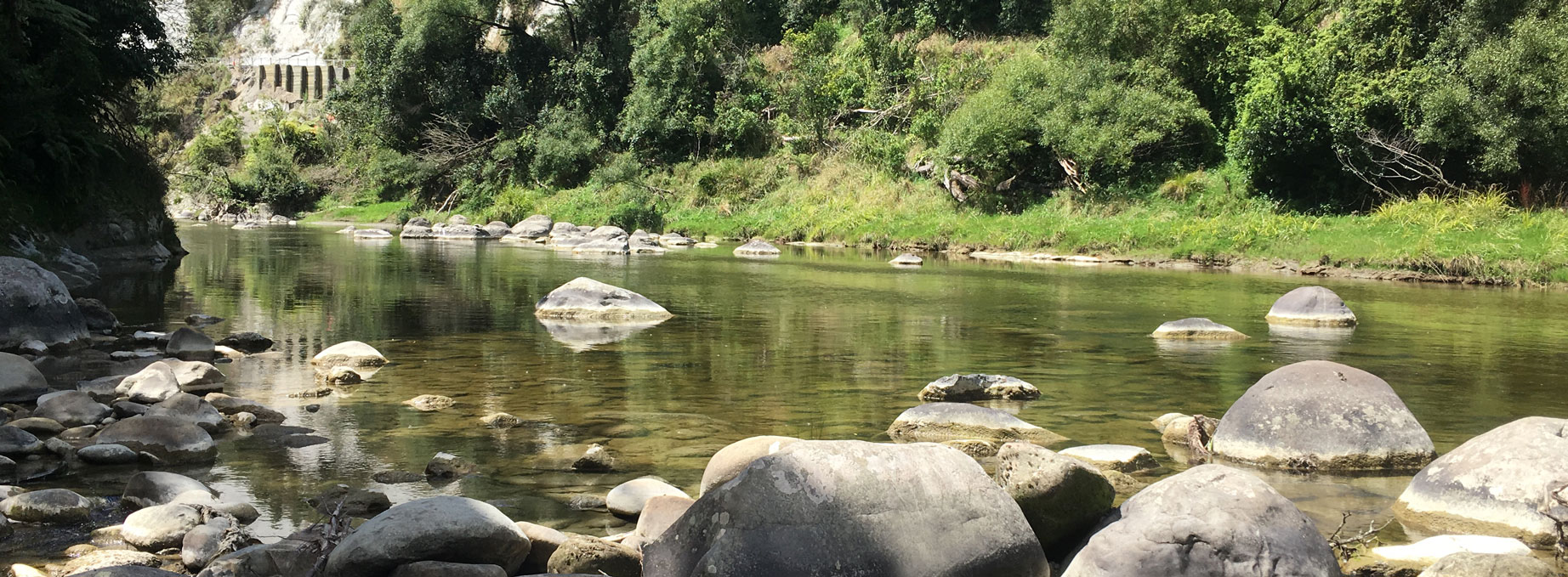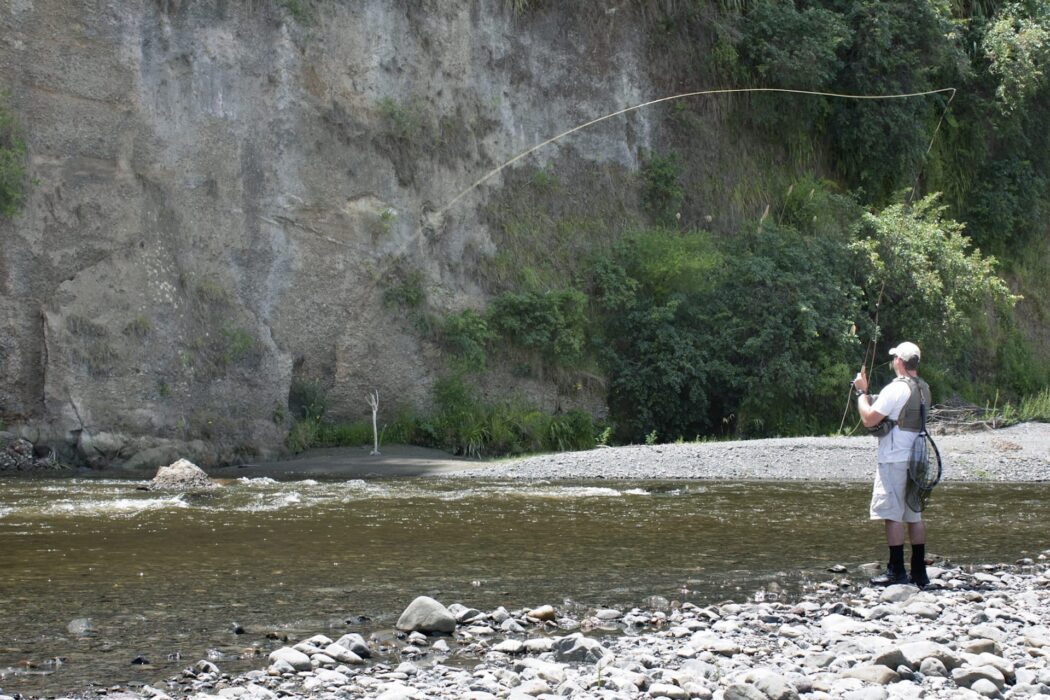Every value must have one or more environmental outcomes linked to it. Where a value describes a particular thing the region’s communities care about, the environmental outcome articulates what success looks like in providing for that value. The environmental outcomes also link to the long-term visions - when the outcomes are achieved, the vision is achieved.
Please find below the draft environmental outcomes for the revised One Plan. If you have any feedback on this, share your thoughts here.
Note: All these objectives are subject to the overarching objective for Te Mana o te Wai.
The quality of water in all natural freshwater bodies will:
(a) Support mauri and the values specified in the proposed plan; and
(b) Where the quality of water in any freshwater body has become degraded by human activity, water quality will be improved by 2055 to a state that will support mauri and the values specified in the proposed plan and
(c) Where the mauri and quality of water in any freshwater body is not degraded, water quality will be maintained.
The quantity of freshwater in surface water bodies will:
(a) Sustain mauri, life-supporting ecological processes and habitats and protect aquatic ecosystem health; and
(b) Maintain and, where degraded, restore natural form, the extent and variability in the level or flow of water and protect natural character.
The quality and quantity of groundwater will sustain ecosystem health, mauri, ecosystem processes and indigenous ecosystems and species that inhabit groundwater ecosystems for connected surface water bodies that derive all or part of their flow from groundwater.
The quality and quantity of water taken and used for drinking water, including in source water risk management areas (SWRMA), will be suitable for consumption by people and animals, except where natural conditions affect quality or quantity.
The natural biological, hydrological, visual and physical characteristics of all freshwater bodies are protected, and where degraded are restored, including:
a. It’s biophysical, ecological, geological, geomorphological and morphological aspects;
b. the natural movement of water and sediment including hydrological and fluvial processes;
c. the natural location of a water body and course of a river;
d. the relative dominance of indigenous flora and fauna;
e. the presence of culturally significant species;
f. the colour of the water; and
g. the clarity of the water.
Aquatic habitats and indigenous aquatic ecosystems are protected and, where degraded by human activity, are restored to enhance the values in the proposed plan, including:
(a) Natural form, structure and extent of water bodies;
(b) The natural form and extent of the beds and banks of rivers;
(c) Natural river flows, pools, riffles and runs;
(d) Indigenous riparian vegetation;
(e) Natural connections to flood plains and flood plain wetlands; and
(f) Natural connections to groundwater aquifers.
Ecological processes and the abundance and diversity of indigenous aquatic life are protected and, where impacted by human activity, are enhanced including the interactions between populations and communities, and interactions between populations and communities and their physical and chemical environments.
Critical habitats and conditions necessary for the survival of populations of threatened species in surface water bodies support the presence, abundance, resilience, recovery and all life stages of the species.
Freshwater is available in sufficient quantity and suitable quality, after providing for the matters in Objectives 1 to 6, to:
a) Meet reasonably foreseeable human health needs; and
b) Provide for recreational enjoyment; provided that
c) All water abstracted is used efficiently.
Freshwater is available in sufficient quantity and suitable quality, after providing for the matters in Objectives 1 to 6, to:
a) Provide water to support the social, economic and cultural wellbeing of people and communities, including for commercial and industrial use; and
b) Support domestic fruit and vegetable supply; and
c) Meet the reasonable needs of livestock; provided that
d) All water abstracted is used efficiently.
Water quality and water quantity in all natural freshwater bodies provides for human contact and allows for connections with water through a range of activities including swimming, waka, boating, fishing, mahinga kai, customary uses and water skiing, in a range of different flows or levels, except in circumstances where public health and safety or cultural values (e.g. rahui after drowning or an area is tapu) are at risk.
Mahinga kai in freshwater bodies, including tuna, īnanga, kōura, kākahi, lamprey, watercress and other species where identified, is plentiful, resilient, healthy, safe to harvest and eat, and is accessible to tangata whenua for customary use. Tangata whenua can transfer knowledge about the preparation, storage and cooking of kai or resources for the next generation.
Wai tapu sites in surface water bodies are safeguarded from waste from human activity, contaminants and excess sediment and any identified taonga in the wai are protected.
[placeholder, in progress]
Rivers and freshwater bodies are navigable for waka and water craft and are accessible at safe, appropriately located public launching and landing sites.
Continued generation of hydro-electric power must recognise:
a) The importance of existing hydro-electric power schemes to meeting national greenhouse gas emission targets is recognised; and
b) The regional and national contribution of existing hydro-electric power schemes to maintaining the security of New Zealand’s electricity supply is recognised; and
c) Provide for the generation capacity, storage, and operational flexibility of existing hydro-electric power schemes.
[placeholder, subject to clause 3.33]
The national and regional social, economic, cultural and community resilience benefits of operating, maintaining and upgrading existing flood control and drainage schemes are recognised and the risks associated with flooding and erosion are minimised.
Where there is a functional need for operating, maintaining and upgrading existing infrastructure,the national and regional social, economic, cultural and community resilience benefits are recognised.
The headwaters of water bodies that are sourced and flow in [intact] [Public Conservation Land] are maintained in their natural state.
Public access to and along rivers and lake edges is maintained and enhanced in a manner that is appropriate to the ecological values at a site, except in circumstances where public health and safety, significant indigenous biodiversity or cultural values are at risk.
In surface water bodies, insofar as it is consistent with Objective 7 – Aquatic life and ecological processes, fish abundance and diversity is maintained or improved where degraded by human activity, to provide for a range in species and size of fish and support fisheries of species allowed to be caught and eaten.
The passage of fish is maintained, or is improved by instream structures, except where it is desirable to prevent the passage of fish species in order to protect desired fish species, their life stages, or their habitats.
[Placeholder]





